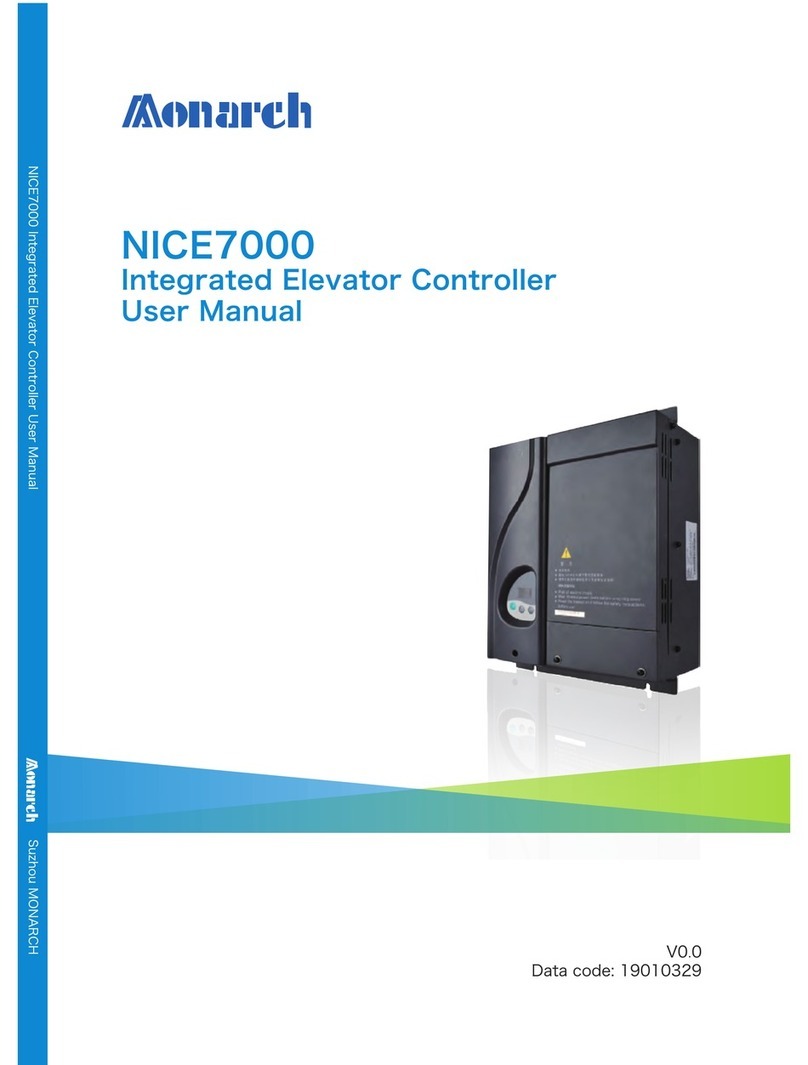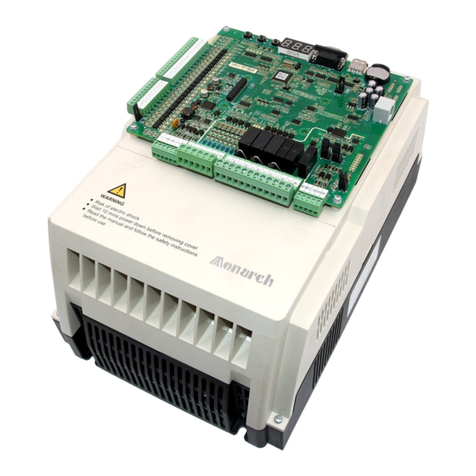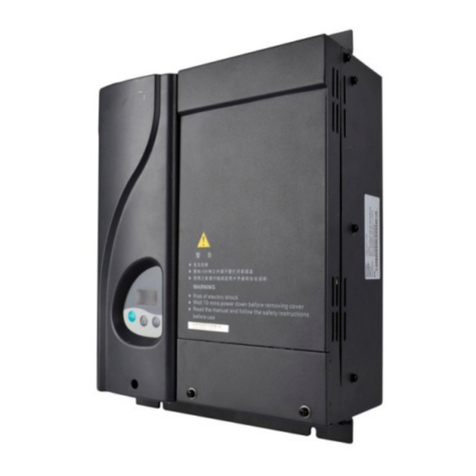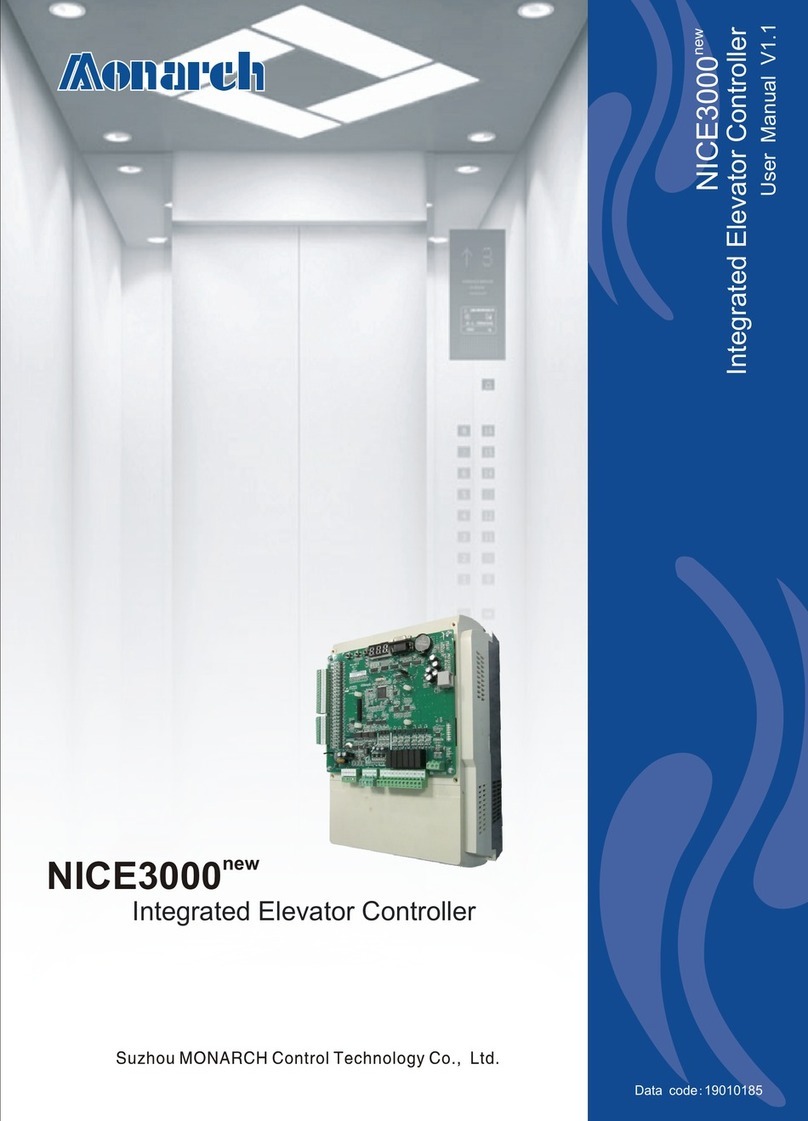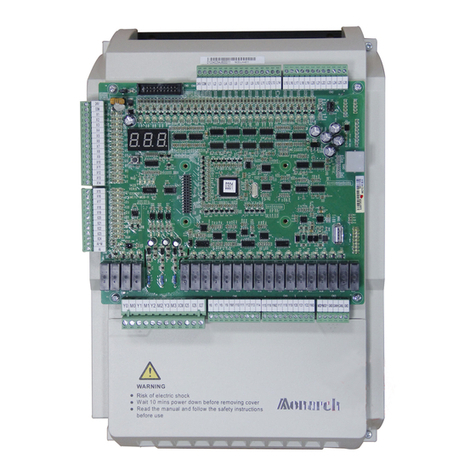Product Information Brief NICE3000 Instruction Manual
- 8 -
2.3 Electrical Specifications
Table 2-2 NICE3000 models and electrical specifications
System Model Power
Capacity (kVA)
Input Current
(A)
Output
Current (A)
Motor Power
(kW)
AC supply voltage: single-phase 220 V, range: –15% to 20%
NICE-L-A/B-2002 2.3 13.2 5.2 1.1
NICE-L-A/B-2003 3.4 17 7.5 1.5
220-NICE-L/L1-A/B-4007 9.8 29 10.3 2.2
220-NICE-L/L1-A/B-4011 12.1 36 15.5 3.7
220-NICE-L/L1-A/B-4015 13.9 41 19 4.0
220-NICE-L-A/B-4018 17.3 40 22.5 5.5
220-NICE-L-A/B-4022 23.1 49 27.7 11
220-NICE-L-A/B-4030 33 61 34.6 15
AC supply voltage: three-phase 220 V, range: –15% to 20%
NICE-L-A/B-2002 4.0 11.0 9.6 2.2
NICE-L-A/B-2003 5.9 17.0 14.0 3.7
220-NICE-L/L1-A/B-4007 17.0 29.0 18.0 4.0
220-NICE-L/L1-A/B-4011 21.0 36.0 27.0 5.5
220-NICE-L/L1-A/B-4015 24.0 41.0 33.0 7.5
220-NICE-L-A/B-4018 30.0 40.0 39.0 11.0
220-NICE-L-A/B-4022 40.0 49.0 48.0 15.0
220-NICE-L-A/B-4030 57.0 61.0 60.0 18.5
AC supply voltage: three-phase 380 V, range: –15% to 20%
NICE-L-A/B-4002 4.0 6.5 5.1 2.2
NICE-L-A/B-4003 5.9 10.5 9.0 3.7
NICE-L-A/B-4005 8.9 14.8 13.0 5.5
NICE-L/L1-A/B-4007 11.0 20.5 18.0 7.5
NICE-L/L1-A/B-4011 17.0 29.0 27.0 11.0
NICE-L/L1-A/B-4015 21.0 36.0 33.0 15.0
NICE-L-A/B-4018 24.0 41.0 39.0 18.5
NICE-L-A/B-4022 30.0 49.5 48.0 22.0
NICE-L-A/B-4030 40.0 62.0 60.0 30.0
NICE-L-A/B-4037 57.0 77.0 75.0 37.0
NICE-L-A/B-4045 69.0 93.0 91.0 45.0






